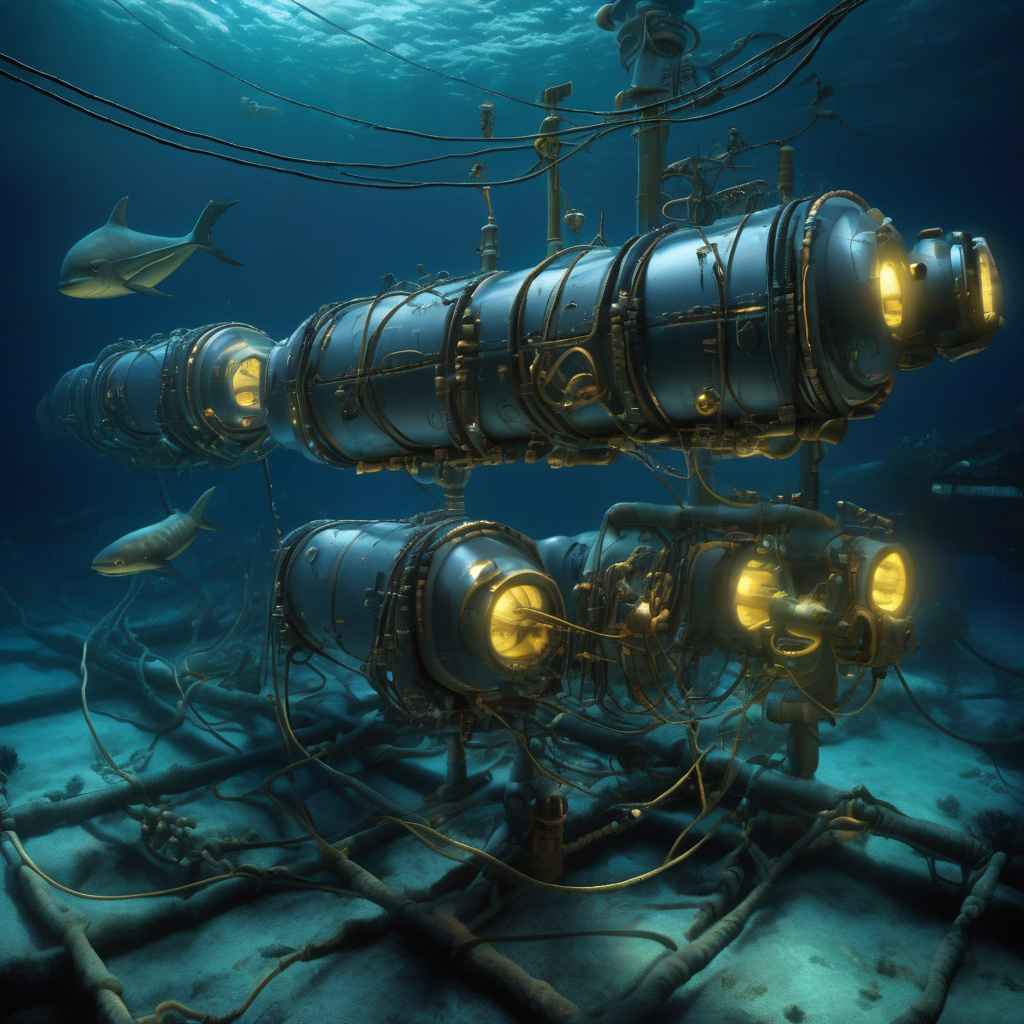Turning Undersea Fiber-Optic Cables into Submarine-Hunting Sonars: How US and EU Navies Are Leveraging Seafloor Infrastructure for Maritime Security
In the vast expanse of the world’s oceans, undersea fiber-optic cables play a crucial role in facilitating global communication. These cables, stretching over 1.2 million kilometers (750,000 miles) across the ocean floor, form the backbone of international telecommunications, enabling the high-speed transmission of data between continents. However, their significance goes beyond connectivity – they are now being repurposed by the navies of the United States and the European Union as a sophisticated tool for maritime security.
Traditionally, naval forces have relied on a network of sensors, sonar systems, and satellites to detect and track submarines operating beneath the ocean’s surface. While these technologies are highly effective, they are also expensive to deploy and maintain. In a groundbreaking initiative, the US and EU navies are exploring innovative ways to harness the existing infrastructure of undersea cables to enhance their underwater surveillance capabilities.
By leveraging the vast network of undersea fiber-optic cables, which crisscross strategic maritime regions around the world, naval forces can effectively transform these communication lifelines into a distributed array of underwater listening devices. The principle behind this concept is simple yet ingenious – by using the cables as acoustic sensors, capable of detecting the subtle sounds and vibrations generated by passing submarines, naval operators can effectively create a virtual underwater fence for detecting and tracking potential threats.
The key to this innovative approach lies in the inherent properties of undersea fiber-optic cables. These cables are designed to transmit data over long distances with minimal signal loss, making them ideal for capturing and relaying acoustic signals underwater. By strategically deploying specialized monitoring equipment along the cable network, naval forces can effectively “listen in” on underwater activities, extending their surveillance reach far beyond traditional sensor networks.
Moreover, the use of undersea cables as submarine-hunting sonars offers a cost-effective solution for enhancing maritime security. Instead of investing in dedicated sonar arrays or deploying additional surveillance assets, navies can leverage the existing infrastructure of undersea cables, maximizing their operational capabilities without significant additional costs. This innovative approach not only enhances the efficiency of underwater surveillance but also demonstrates the adaptability and resourcefulness of modern naval forces in leveraging existing technologies for strategic advantage.
Furthermore, the collaboration between the US and EU navies in repurposing undersea fiber-optic cables for maritime security highlights the importance of international cooperation in addressing emerging security challenges. By jointly developing and implementing innovative solutions, such as turning seafloor cables into submarine-hunting sonars, naval forces can effectively enhance their operational capabilities and strengthen maritime domain awareness on a global scale.
In conclusion, the initiative to turn undersea fiber-optic cables into submarine-hunting sonars represents a paradigm shift in maritime security operations. By harnessing the power of existing infrastructure for innovative purposes, the US and EU navies are at the forefront of leveraging technology to address evolving security threats in an increasingly complex maritime environment. This pioneering approach not only demonstrates the strategic foresight of naval forces but also underscores the transformative potential of repurposing existing assets for enhanced security and defense capabilities.
navies, undersea cables, submarine-hunting sonars, maritime security, international cooperation











